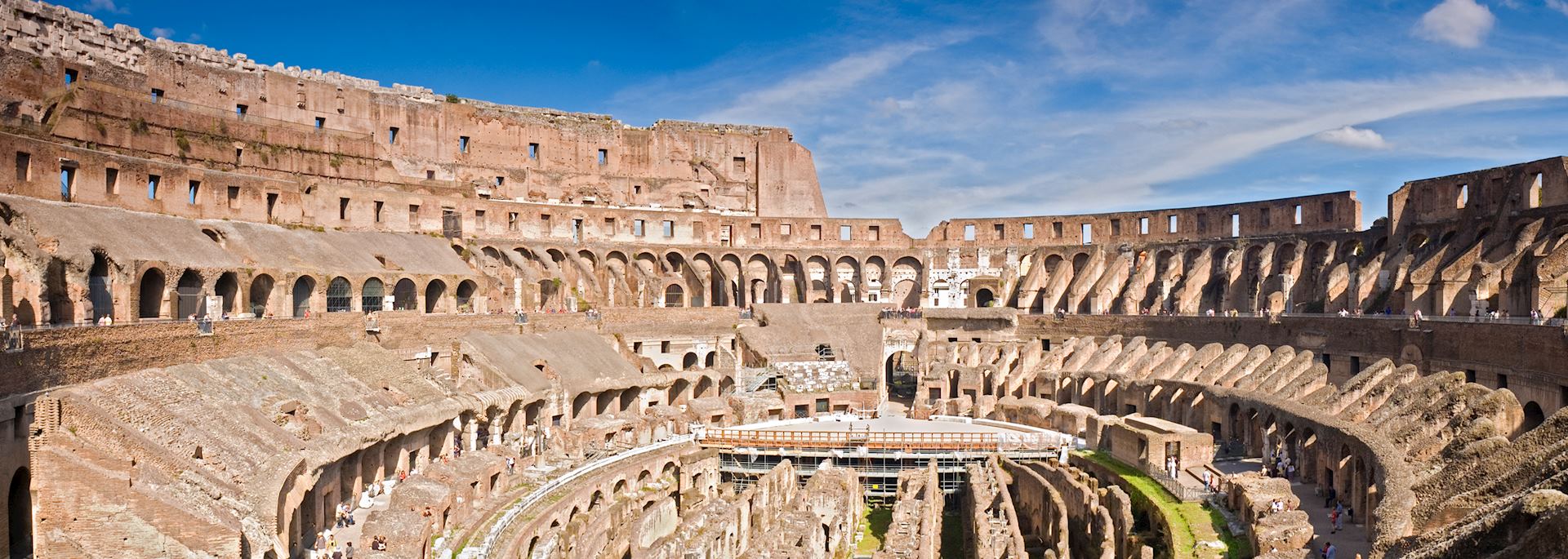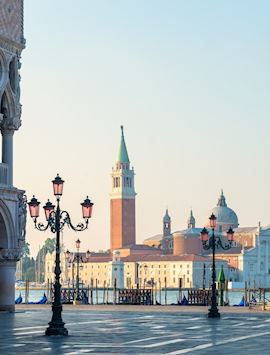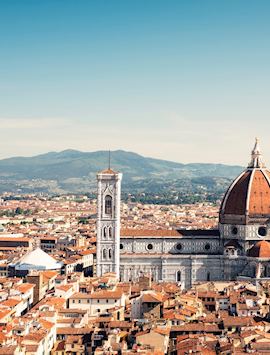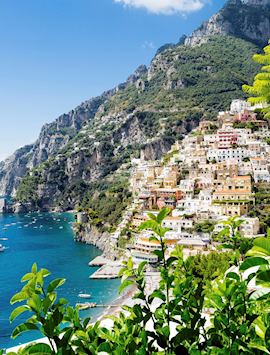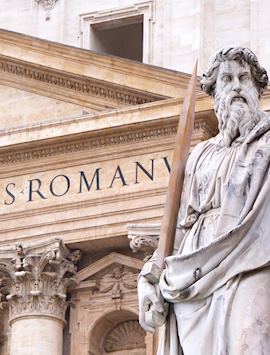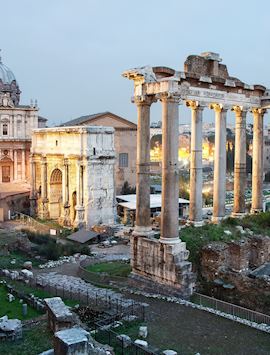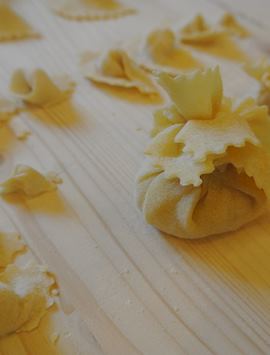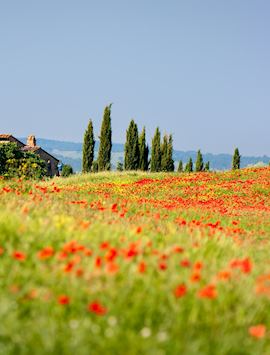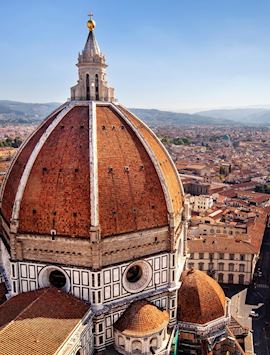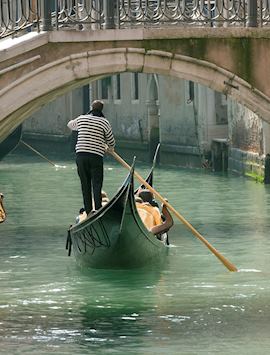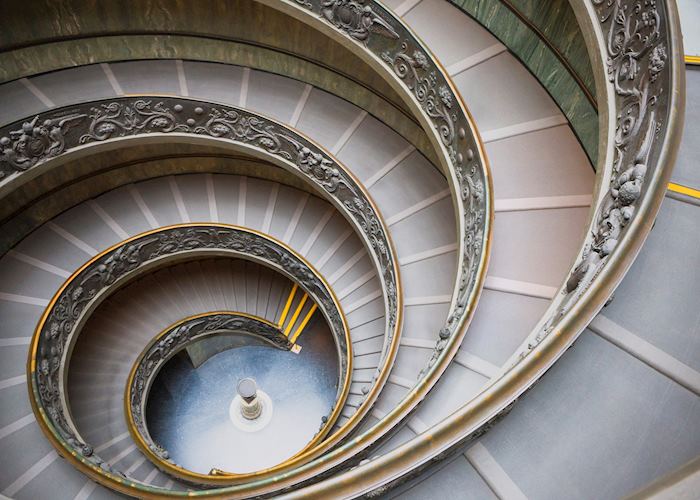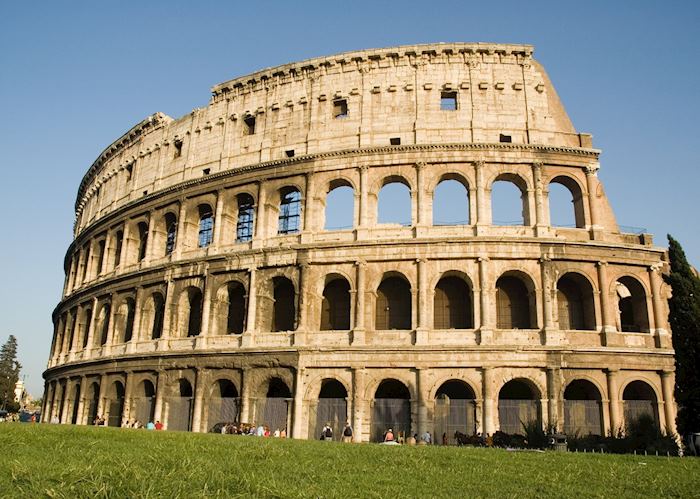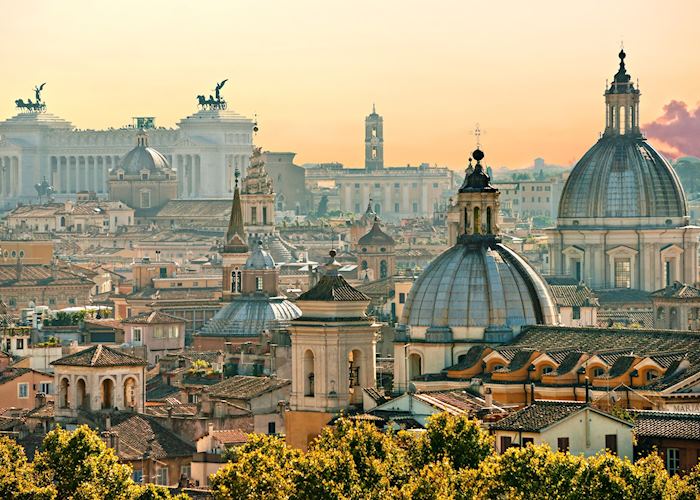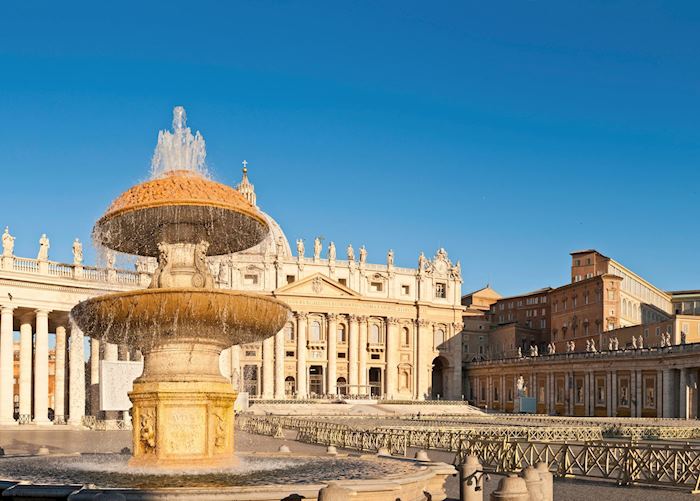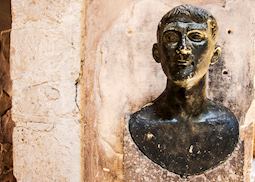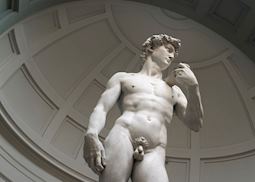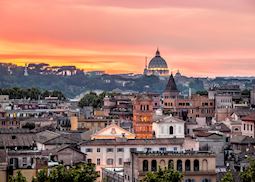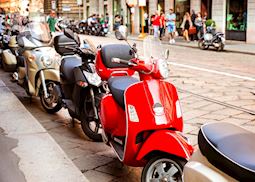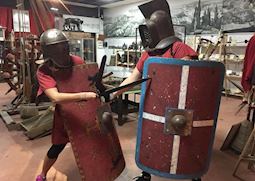Jump to:
Arguably one of the most pivotal cities in ancient history, Rome's enduring influence spans 2,500 years from the legend of the first king Romulus and his defeated twin brother Remus, to Julius Caesar's Republic and the birth of the empire under Augustus.
Rome earned its status as the Eternal City and is awash with grandiose architectural achievements dating back to antiquity, as well as intricately designed Baroque fountains and churches, powerful Renaissance artworks and lively modern piazzas. It’s also home to the Vatican, where you can see some of the greatest art in the world.
Italy specialist ShannonDuring the day, Rome is an open-air museum, dense with history and art. But at night, its modern café culture comes alive: locals drink and relax in the squares, while ramshackle trattorias serve delicious food.
Things to see and do in Rome
The Pantheon
Although the Colosseum is more widely known, the Pantheon is Rome’s most complete ancient structure. Your first view of this temple-turned-church is likely to be a glimpse of the large dome from one of the narrow side streets around the Piazza della Rotonda where it stands. Stepping across the portico, past three rows of monolithic Corinthian columns, you enter the vast rotunda, perfectly symmetrical, clad in marble and richly decorated.
Tombs occupy alcoves in the walls — Raphael is buried here, among other notables — but your eyes are drawn to the coffered dome of the ceiling, a Roman master feat of engineering executed in concrete and still the largest unreinforced concrete dome in the world. A rainy day in Rome might not be what you wish for, but it does give you the chance to watch the water pour in through the dome’s central hole, or oculus, and bounce off the marble floor.
The Trevi Fountain
 Five minutes' walk from the Pantheon, the Trevi Fountain, or Fontana di Trevi, remains hidden behind tall buildings and narrow lanes until the last moment. Rome’s largest and most flamboyant fountain is squeezed into a modest square at the point where three streets (tre vie, hence the name) meet, which leaves you with the impression of a grand spectacle in an intimate setting. Because the fountain fills most of the piazza, it feels crowded throughout the day, but the early morning is a quiet time to appreciate the fountain’s Baroque statuary illuminated by the rising sun.
Five minutes' walk from the Pantheon, the Trevi Fountain, or Fontana di Trevi, remains hidden behind tall buildings and narrow lanes until the last moment. Rome’s largest and most flamboyant fountain is squeezed into a modest square at the point where three streets (tre vie, hence the name) meet, which leaves you with the impression of a grand spectacle in an intimate setting. Because the fountain fills most of the piazza, it feels crowded throughout the day, but the early morning is a quiet time to appreciate the fountain’s Baroque statuary illuminated by the rising sun.
The water that cascades out from beneath the central statue of Oceanus and over a series of basins is still fed by a Roman aqueduct which was renovated in Renaissance times. Legend has it that if you throw a coin over your shoulder and into the fountain’s main pool you will return to Rome in the future. About €3,000 is collected from the fountain each day and donated to local good causes.
The Spanish Steps
There’s something of a Sunday afternoon feel about the Spanish Steps and the Piazza di Spagna at their feet: people sit chatting on the steps, street entertainers perform for children and friends congregate on the long, narrow piazza, giving it a convivial atmosphere.
In spring, vibrant azaleas cascade down their length to the Fontana della Barcaccia, a fountain designed by Gian Lorenzo Bernini and his father. The half-submerged boat shape nods to the piazza’s past susceptibility to flooding, while the two sun-shaped faces that spout the water are symbols of Urban VIII, the pope who commissioned the fountain.
The steps are crowned by the Trinità dei Monti, an imposing French church with double towers. The obelisk in front of the church is a Roman homage to Egyptian sculpture, while inside, some of its chapels contain works by Michelangelo’s pupil, Daniele da Volterra. Although the square and steps are named after their location close to the Spanish Embassy, the steps were funded by a legacy from the French, who supposedly wished to make the climb to the church a little easier for their nuns.
The Vatican City
 Vatican City is split from the historic heart of Rome by the Tiber, but the colossal dome of St Peter's Basilica is visible on the skyline from most vantage points in the city. The cupola crowns a place of worship that is both a mass gathering place for pilgrims and the Catholic Church’s ultimate demonstration of wealth and power.
Vatican City is split from the historic heart of Rome by the Tiber, but the colossal dome of St Peter's Basilica is visible on the skyline from most vantage points in the city. The cupola crowns a place of worship that is both a mass gathering place for pilgrims and the Catholic Church’s ultimate demonstration of wealth and power.
Although not the largest of Rome’s squares, the vast oval Piazza San Pietro in front of the basilica sets the scale with space for over 400,000 worshipers. The basilica and the two encircling arms of its colonnaded walkways showcase the combined talents of a succession of architects, including Bernini.
The dome itself was designed by Michelangelo, and the Vatican, the smallest state in the world, holds the greatest collection of his works, among its other High Renaissance treasures. The entrance to the Vatican Museums is five minutes' walk from Piazza San Pietro. Once inside, you’re directed through palatial corridors and stanzas (rooms) until you step into the Sistine Chapel and are under Michelangelo’s triumphant ceiling with his painting of the Last Judgement covering the altar wall.
The Colosseum
Rome's best-known sight is its massive Colosseum, where emperors hosted legendary battles and gladiators, slaves and exotic animals met in bloody combat to entertain up to 87,000 spectators.
Completed in 80 AD, the structure was originally clad in travertine with marble statues filling the alcoves in the walls. Although much of this exterior decoration was stripped away when the games were finally banned in the 6th century, the sheer scale of what remains gives a clear impression of the barbarity and the popularity of this gory form of Roman entertainment.
During the battles, a massive canvas would have covered the entire arena while a system of trapdoors in the wooden floor led down to a complex arrangement of passageways where animals were caged and sets prepared. To get a more visceral idea of what life was like for the embattled fighters, you can take a class that introduces you to the gladiatorial martial arts at a school on the nearby Appian Way.
Your entrance ticket is valid for three days and also gives access to the adjacent Roman Forum and Palatine Hill. Once the heart of political and commercial activity in ancient Rome, the forum covers a massive, sprawling area of ancient ruins of temples, basilicas and archways. Highlights include the 3rd-century Arco di Settimio Severo and the Curia, the seat of the Roman Senate which was reconstructed in 1937.
Galleria Borghese in the Villa Borghese gardens
 Central Rome’s green lung, the Villa Borghese gardens are a cool and shady respite from the heat of the day. The park sits on the Pincian Hill, and the viewpoint from its southern edge, looking out across a skyline of church cupolas dominated by the dome of St Peter’s, is a classic image of Rome.
Central Rome’s green lung, the Villa Borghese gardens are a cool and shady respite from the heat of the day. The park sits on the Pincian Hill, and the viewpoint from its southern edge, looking out across a skyline of church cupolas dominated by the dome of St Peter’s, is a classic image of Rome.
Set within the park, the Galleria Borghese was once a villa before its owner, the 16th-century art magnate Cardinal Scipione Borghese, turned it into a gallery to showcase his swiftly growing collection of works from artists such as Raphael, Titian and Caravaggio.
The sculptor Gian Lorenzo Bernini left his mark all across Rome in the century following the Renaissance, but the Cardinal commissioned two of his greatest works — The Rape of Persephone and Apollo and Daphne — which still stand in the spots intended for them in Sala I of the Galleria. Bernini was a master in taking the cold, hard medium of marble and turning it into warm, pliable flesh — note the way Pluto’s gripping fingers sink into Persephone’s thigh.
Rome’s local churches
As the view from the Villa Borghese gardens will tell you, Rome is dense with churches. Many contain architectural curiosities, impressive art, or architectural feats like Borromini’s elliptical dome on San Carlo alle Quattro Fontane Church.
Santa Maria sopra Minerva, a Gothic church with a cobalt-blue nave ceiling almost adjacent to the Pantheon, is built on the foundations of a Roman temple to the goddess of wisdom (hence its name ‘Maria over Minerva’). Look for Michelangelo’s muscular statue of the Risen Christ, to which the church later added a bronze loincloth.
The Jesuit Sant’Ignazio Church, a couple of streets away from the Pantheon, has an opulent interior studded with precious stones and a trompe l’oeil dome. Its planned dome was never built, so artist Andrea Pozzo painted a canvas for the ceiling that gives the impression you’re seeing a lofty, coffered dome when viewed from a marked spot in the church.
Sant’Agostino Basilica, near the Piazza Navona, has an under-visited Caravaggio painting, The Madonna di Loreto. It was a controversial work in its day: the woman who posed for Caravaggio was allegedly a prostitute, and contemporary viewers were shocked by the artist’s depiction of everyday details, such as the beggar’s grubby feet. To see this and other works by Caravaggio that hang in various churches around the city, we can arrange for you to join an art expert for a guided tour. Afterwards, you’ll return to a small studio where an artist will teach you about the old master’s style and you can put paintbrush to canvas yourself to attempt his distinctive, crimson-soaked techniques.
Rome’s fountains
As well as the Trevi, Rome has a number of other intriguing but less heralded fountains, which were often commissioned by popes to commemorate their generous restoration of ancient Roman aqueducts.
Bernini’s Quattro Fiumi (Four Rivers) fountain on Piazza Navona has an urban legend attached to it. Notice how the fountain’s figures facing the church of Sant’Agnese in Agone are cringing or covering their faces with a veil. The story goes that Bernini lost out on the church commission to contemporary architect Borromini, and the statues are Bernini’s way of saying that his rival’s church is ugly.
Another Bernini masterpiece is the Fontana del Tritone in Piazza Barberini, showing the mythological sea god Triton blowing into a conch. At the periphery of the same piazza, you’ll also find the Fontana delle Api (Fountain of the Bees). An inscription explains that Pope Urban VIII commissioned it, along with the Triton Fountain. The bees — sitting on a bivalve shell — are an emblem of the Pope.
The Fontana delle Tartarughe (Turtle Fountain) has been trickling away in the tiny Piazza Mattei, a few streets west of the Campo de’ Fiori (flower market), since 1581. Originally created by della Porta, its four bronze tortoises were a later addition and their creator remains unknown.
Roman food
 The architectural evidence of Rome’s epic history often overshadows its culinary achievements, but its distinctive cuisine is well worth exploring. Not only is it delicious, it also reflects the city’s 2,000-year legacy.
The architectural evidence of Rome’s epic history often overshadows its culinary achievements, but its distinctive cuisine is well worth exploring. Not only is it delicious, it also reflects the city’s 2,000-year legacy.
A walking tour through the Jewish Ghetto gives you the chance to discover the origins of some of the city’s best-known dishes, as you sample traditional Roman-Jewish dishes like fried artichokes and supplì, the Roman version of fried rice balls.
We also suggest stopping in any of the city’s many pizzerias to sample Rome’s particular brand of pizza, which is different to elsewhere in Italy or around the world. Known as pizza al taglio, it’s baked in long rectangular sheets and cut to order — al taglio means ‘by the cut’. Often, it’s piled high with fresh ingredients after it comes out of the oven. We can also arrange a class with a Roman pizzaiolo to learn to make the more common round variety.
Rome is also a good option for oenophiles. You can indulge in a wine-tasting meal led by a sommelier, who will discuss Italy’s many wine-growing regions and how to pair each wine with different dishes.
The Trastevere District
This jumble of narrow cobblestone streets and piazzas sits across the River Tiber from central Rome’s historic heartland. It retains a medieval feel: its streets are punctuated by bell towers, lines of laundry, and shrines to the Virgin Mary.
While in parts it retains its down-to-earth character, it’s also speckled with chic restaurants, cafés, boutiques and nightclubs attracting a young crowd who congregate around the fountain in the Piazza di Santa Maria in Trastevere.
The church of the same name that stands on this piazza dates back to the 3rd century. The granite columns in its nave were pillaged from ancient Roman sites. Today it’s most celebrated for its 13th-century mosaics by Cavallini, which have a realism and intensity unusual for the period.
Another church worth visiting in this district is Santa Cecilia in Trastevere, dedicated to the Roman martyr and patron saint of music. The remains of her house and an ancient Roman tannery lie underneath. A visit to Trastevere can be included in a Vespa tour of Rome.
who's been there
-
617-223-4521617-223-4395
- Make an inquiry
Suggested itineraries featuring Rome
Our itineraries will give you suggestions for what is possible when you travel in Rome, and they showcase routes we know work particularly well. Treat them as inspiration, because your trip will be created uniquely by one of our specialists.
Places near Rome
- Orvieto 60 miles away
- Umbria 74 miles away
- Assisi 82 miles away
- Perugia 85 miles away
- Ischia 111 miles away
- Siena 115 miles away
- Naples 118 miles away
- Herculaneum 123 miles away
- Capri 130 miles away
- San Gimignano 132 miles away
- Pompeii 132 miles away
- Sorrento 132 miles away
- The Amalfi Coast 141 miles away
- Florence 144 miles away
- Costa Smeralda 164 miles away
- Pisa 165 miles away
- Ravenna 176 miles away
- Forte dei Marmi 185 miles away
- Bologna 190 miles away
- Porto Venere 201 miles away
- Modena 206 miles away
- Cinque Terre 208 miles away
- Sardinia 219 miles away
- Parma 229 miles away
- Matera 230 miles away
- Portofino and Santa Margherita 235 miles away
- Venice 246 miles away
- Genoa 250 miles away
- Puglia 252 miles away
- Southern Sardinia 256 miles away
- Verona 257 miles away
- Alberobello 259 miles away
- Fasano 264 miles away
- Sirmione 265 miles away
- Palermo 266 miles away
- Erice and Trapani 267 miles away
- Lake Garda 273 miles away
- Gardone Riviera 275 miles away
- Ostuni 277 miles away
- Marsala 284 miles away
- Barbaresco 296 miles away
- Barolo 296 miles away
- Alba 297 miles away
- Milan 297 miles away
Photos of Rome
Our expert guides to exploring Rome
Written by our specialists from their own experiences of visiting Rome, these guides will help you make the most of your time there. We share both our practical recommendations and the best ways to appreciate Rome at its best.
-
Unlocking Italy’s key Roman sites of Rome, Pompeii & Herculaneum ![Statue, Herculaneum]()
Unlocking Italy’s key Roman sites of Rome, Pompeii & Herculaneum
Unlocking Italy’s key Roman sites of Rome, Pompeii & Herculaneum
Italy has been at the forefront of so much: a military empire, art, architecture, cuisine and of course a penchant for style. For many however it’s still characterized by a handful of famous places. We highlight the key Roman sites of Rome, Pompeii and Herculaneum.
Read this guide -
Italy’s art cities: Venice, Florence and Rome ![Michelangelo's 'David', Florence]()
Italy’s art cities: Venice, Florence and Rome
Italy’s art cities: Venice, Florence and Rome
From classical Roman statues through Renaissance frescoes to modern installations, you can trace a complete history of Western art in Italy’s great cities. Specialist Kimberly talks about how to deal with the crowds as you take in these important works.
Read this guide -
How to see Rome in four days ![Rome skyline at dusk]()
How to see Rome in four days
How to see Rome in four days
Discover Rome’s long history, from the half-ruined majesty of the Colosseum to a romantic burial yard for non-Catholics. Nick, a one-time resident, talks about what to see and do in Rome and how to beat the crowds at the Sistine Chapel.
Read this guide -
How to eat like the Romans do ![The Art of Pizza, Rome]()
How to eat like the Romans do
How to eat like the Romans do
Bold, powerful and deceptively simple, Roman cuisine is often overlooked. That’s a shame, says Italy specialist Nick, a one-time resident of Rome. He talks about where to eat the city’s signature dishes and why you shouldn’t buy bottled water when you visit.
Read this guide -
Food highlights of Italy ![Italian market produce]()
Food highlights of Italy
Food highlights of Italy
Italy specialist Caroline talks about her love of Italian food in this guide, focusing on the more renowned culinary cities and regions. She also talks about her experiences of creating pasta, catching fresh fish for dinner in Sorrento, wine tasting in Tuscany's Chianti region and where to eat like a local.
Read this guide -
Experience la dolce vita in Italy ![Rome skyline, Italy]()
Experience la dolce vita in Italy
Experience la dolce vita in Italy
The allure of Italy is endless, from local delicacies in Tuscany and historical architecture in Rome to the rugged coastline of the Amalfi Coast. With activities spanning every range of interests it can be difficult to know where to begin, but our Italy specialists have traveled the country to select the best of all Italy has to offer.
Read this guide
Accommodation choices for Rome
We've selected a range of accommodation options for when you visit Rome. Our choices usually come recommended for their character, facilities and service or location. Our specialists always aim to suggest properties that match your preferences.
-
![Crossing Condotti, Rome]()
Crossing Condotti
Rome -
![Hotel Sofitel Rome Villa Borghese, Rome]()
-
![Inn at the Roman Forum, Rome]()
-
![Breakfast, Fortyseven Hotel, Rome]()
47Hotel
Rome -
![Palazzo Manfredi, Rome]()
Palazzo Manfredi
Rome -
![Hotel de Russie, Rome]()
Hotel de Russie
Rome -
![The Inn at the Spanish Steps, Rome]()
-
![Villa Spalletti Trivelli, Rome]()
-
![Entry, Luxe Rose Garden Hotel]()
-
![Palazzo Dama, Rome]()
Palazzo Dama
Rome -
![Marcella Royal, Rome]()
Marcella Royal
Rome -
![Courtyard at VRetreats Donna Camilla Savelli]()
Ideas for experiencing Rome
Our specialists seek out authentic ways to get to know the places that could feature in your trip. These activities reflect some of the experiences they've most enjoyed while visiting Rome, and which use the best local guides.
-
Vatican Museums, Sistine Chapel & St Peter's Basilica ![St Peters Statue at the Vatican, Rome]()
Vatican Museums, Sistine Chapel & St Peter's Basilica
Vatican Museums, Sistine Chapel & St Peter's Basilica
With the benefit of a private guide to bring these key sites to life, you will explore the Vatican, Sistine Chapel and St Peter’s Basilica.
View details -
La Dolce Vita: Vespa tour of Rome ![Scooters]()
La Dolce Vita: Vespa tour of Rome
La Dolce Vita: Vespa tour of Rome
See Rome from the back of a Vespa motorbike, passing some of the main sites as well as venturing further out into more residential areas.
View details -
Ancient & Imperial Rome: Colosseum & Forum ![Colosseum, Rome]()
Ancient & Imperial Rome: Colosseum & Forum
Ancient & Imperial Rome: Colosseum & Forum
On this tour you will explore the ancient heart of Rome with your private guide, visiting two of the city’s most famous sites: the Colosseum and Roman Forum.
View details -
Roman Gladiator School ![Testing the equipment]()
Roman Gladiator School
Roman Gladiator School
Learn how to become a gladiator at the Roman Gladiator School, located on the historic Appian Way.
View details
